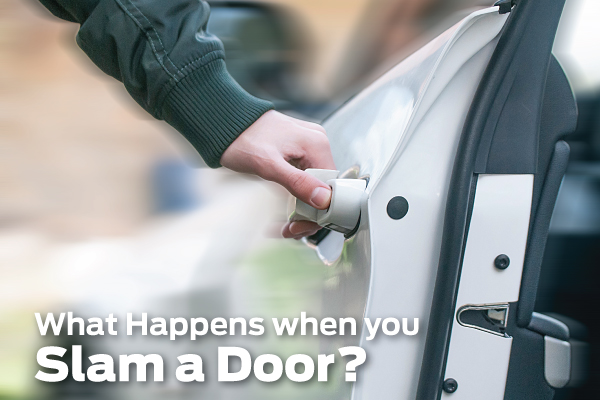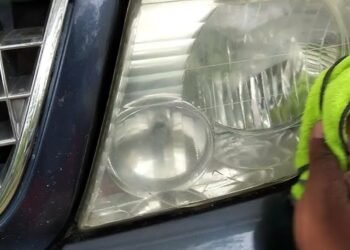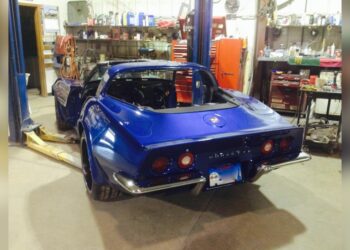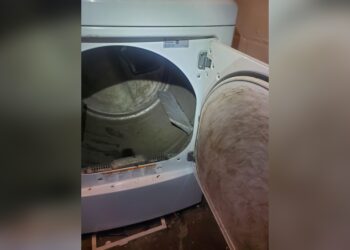Have you ever slammed your car door in frustration or hurry and wondered if it could actually harm your vehicle? It might seem harmless, but each hard slam puts stress on important parts of your car door—like the hinges, latches, and seals—that keep everything working smoothly.
Over time, this can lead to problems like misaligned doors, annoying rattles, or even water leaks. If you want to protect your car and avoid costly repairs, understanding how slamming your car door affects it is key. Keep reading to discover what really happens when you slam your car door and how you can keep your vehicle in top shape.

Credit: www.tekscan.com
Damage To Hinges And Latches
The hinges and latches of a car door are key parts that allow it to open and close smoothly. These components bear the force every time the door moves. Slamming the door can put extra strain on them.
Hinges connect the door to the car frame and allow it to swing open or closed. Latches lock the door securely in place. Both parts are built to handle normal use but can wear out faster with rough treatment.
How Slamming Affects Door Hinges
Slamming a car door repeatedly can cause the hinges to loosen. Loose hinges may make the door sag or misalign. This can make it hard to close properly or cause rubbing against the car body.
Over time, the metal in the hinges can weaken or bend from strong impacts. Damaged hinges may create noise and reduce the door’s stability. Repairing or replacing hinges is often costly.
Impact On Door Latches
Door latches are designed to catch firmly and keep the door closed. Slamming the door can damage the latch mechanism or its alignment. A broken latch may not hold the door securely, risking it opening while driving.
Strong impacts can break internal parts of the latch or wear down the catch points. Malfunctioning latches can cause rattling noises and reduce safety. Fixing latch problems requires professional attention.
Signs Of Damage To Hinges And Latches
Doors that don’t close smoothly or need extra force to latch may have hinge or latch damage. Noticeable sagging or uneven gaps around the door edges also indicate issues.
Rattling sounds while driving suggest loose hinges or latches. Early repairs can prevent further damage and keep the door functioning well.
Effects On Door Frame And Alignment
Slamming a car door impacts more than just the noise it creates. The door frame and alignment suffer from repeated force. Over time, this can cause serious problems with how the door fits and works.
The door frame is the metal structure that holds the door in place. When slammed, it absorbs a strong shock. This shock can bend or weaken the frame slightly. Even small bends affect the door’s ability to close properly. A bent frame can cause gaps, making the door less secure and allowing water inside.
Alignment refers to how the door fits within the car’s body. Proper alignment ensures the door seals tightly and opens smoothly. Slamming can misalign the door by loosening hinges or damaging mounts. Misaligned doors might stick, not latch fully, or rub against the car body. These issues lead to wind noise, leaks, and uneven wear on parts.
Impact On Door Hinges
Hinges connect the door to the car. They allow it to swing open and closed. Slamming forces the hinges to absorb strong shocks repeatedly. This strain can stretch or break hinge pins and bushings. Damaged hinges cause the door to sag or hang unevenly. Sagging makes closing harder and can cause further damage to the latch and frame.
Effects On Door Latch And Locking Mechanism
The latch holds the door closed and locked. Slamming a door puts sudden pressure on the latch. Over time, this pressure can wear out or break latch components. A worn latch might not catch properly, making the door unsafe. It can also cause rattling noises while driving. Faulty latches increase the risk of the door opening unexpectedly.
Consequences For Door Seals And Weatherproofing
Door seals keep water and wind out of the car. They fit tightly around the door edges. Slamming can compress or tear these seals. Damaged seals let moisture enter, causing rust and interior damage. They also reduce insulation, making the cabin noisier and colder. Keeping seals intact protects the car’s interior and improves comfort.
Wear On Weather Stripping And Seals
Weather stripping and seals protect your car from water, dust, and noise. These parts line the edges of your car doors. They create a tight barrier when the door closes. Slamming the door puts extra pressure on these seals. Over time, this pressure can wear them down.
Damaged weather stripping loses its ability to seal properly. Water may leak inside during rain. Dust and wind noise can also increase. This affects your comfort and can cause rust. Replacing weather stripping can be costly and time-consuming.
How Slamming Affects Weather Stripping
Slamming a door forces the weather stripping to compress quickly. This sudden force can crack or tear the rubber. The material may lose its shape, leading to gaps. Gaps let water and air enter the car.
Signs Of Worn Seals
Listen for unusual noises like whistling or rattling. Feel for drafts or moisture inside the car. Check for visible cracks or missing pieces on the seals. These signs show the seals need attention.
Preventing Damage To Weather Stripping
Close doors gently to extend seal life. Clean seals regularly to remove dirt and debris. Use rubber protectant products to keep seals flexible. Inspect seals often for early damage.

Credit: andersonautobodyut.com
Impact On Internal Components
Slamming a car door with force affects more than just the exterior. The internal parts inside the door take a sudden shock. This can cause wear and tear over time.
Repeated slamming can loosen or break small parts. These internal damages may not show immediately but can lead to bigger problems later.
Damage To Door Hinges
Hinges connect the door to the car body. Strong impacts make them bend or wear out faster. Loose hinges cause the door to sag and not close properly.
Effects On Door Latch Mechanism
The latch keeps the door securely closed. Slamming can misalign or weaken it. A damaged latch might cause the door to open unexpectedly while driving.
Wear On Weather Seals
Weather seals stop water and wind from entering the car. Hard slams can crack or flatten these seals. Damaged seals lead to leaks and noisy drafts inside the vehicle.
Impact On Window And Glass Components
Glass and window parts face shockwaves from slamming. Repeated force can cause small cracks or loosen the glass. This may lead to rattling noises or even breakage over time.
Long-term Consequences Of Slamming
Slamming a car door may seem harmless, but repeated force can cause damage over time. The impact stresses parts like hinges and latches. This stress weakens the door’s structure slowly. Small issues can develop into costly repairs later.
Understanding these long-term effects helps maintain your car’s condition. It also prevents noise problems and protects your investment.
Hinge Wear And Tear
Each slam puts pressure on the door hinges. Over time, this causes the hinges to loosen. Loose hinges make the door sag and misalign. Misalignment makes closing the door harder and noisy. Eventually, the hinges may need replacement.
Damage To Latches And Locks
Slamming damages the door latch and locking mechanism. The latch can weaken or break. A broken latch may stop the door from closing securely. It can also cause the door to pop open while driving. Repairing or replacing latches can be expensive.
Seal And Weatherstrip Deterioration
Car doors have rubber seals that keep water out. Slamming causes these seals to compress and crack. Damaged seals allow water and air leaks. This leads to water damage inside the car. The car becomes noisier due to wind entering through gaps.
Frame And Door Panel Damage
Repeated slamming stresses the door frame and panels. It can cause dents and warping. Warped frames affect how the door fits the car body. This reduces the car’s overall strength and safety. Fixing frame damage is often costly and complex.
Signs Of Door Damage From Slamming
Repeatedly slamming a car door can cause damage over time. The strong impact stresses parts like hinges and latches. This wear may not show immediately but worsens with time. Signs appear as the door struggles to work properly.
Knowing these signs helps catch problems early. This prevents costly repairs and keeps your car safe. Below are common signs of door damage caused by slamming.
Loose Or Sagging Door
A door may hang lower than usual after slamming. Hinges weaken and lose their tight fit. This causes the door to sag or not close properly. It might drag against the car frame when opened or closed.
Difficulty Closing Or Latching
The latch may fail to catch easily. You might need to push or pull harder to close the door. Slamming can bend or misalign latch parts. This makes the door less secure and risky to drive with.
Unusual Noises
Listen for creaks, rattles, or grinding sounds. These noises often mean loose hinges or broken seals. Slamming shakes the door and loosens components. Noises usually increase when driving on rough roads.
Visible Damage Or Cracks
Check the door edges and frame for dents or cracks. The force can chip paint or bend metal. Cracks in the door panel or around hinges appear after repeated slamming. These damages reduce the door’s strength and appearance.
Water Leaks Or Wind Noise
Damaged seals allow water and air inside the car. You may notice water spots or dampness near the door. Wind noise while driving can also signal worn seals. Slamming harms these seals by pushing them out of place.
Preventing Damage When Closing Doors
Preventing damage when closing car doors helps maintain your vehicle’s condition. Careful door handling stops costly repairs and keeps the car looking good. Small habits can protect hinges, seals, and latches from wear and tear.
Proper door closing also reduces annoying noises. This improves your driving experience and avoids disturbing others. Follow simple tips to close doors gently and safely.
Use Gentle Pressure To Close Doors
Apply steady, gentle pressure when closing a car door. Avoid pushing or slamming it shut. This prevents stress on the hinges and latch mechanisms. A smooth close keeps parts aligned and working well.
Check And Clean Door Seals Regularly
Inspect door seals for dirt or damage often. Clean seals with mild soap and water to keep them soft and flexible. Healthy seals cushion the door and stop it from banging hard. This protects both the door and the car frame.
Keep Hinges Lubricated
Lubricate door hinges using a silicone spray or grease. Well-lubricated hinges open and close smoothly without extra force. This lowers the risk of wear and prevents squeaking noises. Lubricate every few months for best results.
Hold The Door Firmly While Closing
Hold the door firmly with your hand as you close it. This control stops sudden slams or accidental drops. It also helps guide the door into the latch gently. Avoid letting the door swing freely or fall.
Educate Passengers On Door Care
Remind family and passengers to close doors carefully. Children especially might slam doors without thinking. Teach them the right way to close the door softly. Everyone’s care helps protect the car from damage.

Credit: andersonautobodyut.com
Myths About Slamming Car Doors
Many people believe slamming car doors causes severe damage instantly. These ideas are common but not always true. Understanding myths helps protect your car and avoid unnecessary worry.
Car doors are designed to handle force but not extreme abuse. Learning facts separates real damage from simple myths.
Myth 1: Slamming A Door Will Break The Window
Windows are made of tough glass. One slam will not shatter them. Repeated strong slams may loosen seals or cause small rattles. But breaking a window requires much more force.
Myth 2: Slamming Always Bends The Door Frame
Car frames are strong and flexible. A single slam will not bend or warp the frame. Damage happens only after many slams over time or extreme force.
Myth 3: Slamming Makes Door Hinges Snap Immediately
Hinges are made to support the door’s weight and movement. They wear out gradually. Slamming can speed this wear but does not cause sudden breaks.
Myth 4: Door Seals Break Easily From Slamming
Seals are soft and designed to handle door closing force. Hard slams may stress them but do not break them quickly. Seal damage usually comes from age and weather.
Myth 5: Slamming Causes Instant Rust On The Door
Rust forms from moisture and scratches. Slamming alone does not cause rust. But slamming that chips paint can expose metal and lead to rust over time.
When To Seek Professional Repairs
Knowing when to seek professional repairs after slamming a car door helps prevent bigger problems. Minor noises or small dents might seem harmless at first. Yet, they can signal underlying damage. Early repair saves time and money.
Experts can spot hidden issues that are easy to miss. They check hinges, latches, seals, and the door frame. Proper repair restores door function and prevents leaks or rust.
Signs Of Door Hinge Damage
Hinges may wear out or bend from hard slams. Listen for creaks or feel if the door hangs unevenly. Stiff or loose movement suggests hinge problems. Professional help is needed to fix or replace hinges.
When Door Latches Fail
Slamming can weaken the latch mechanism. Doors might not close securely or pop open unexpectedly. A faulty latch threatens safety while driving. Mechanics can adjust or replace the latch to ensure proper locking.
Detecting Seal And Frame Issues
Door seals protect against water and wind. Damage causes leaks or strange noises inside the car. Frames can bend and affect door alignment. Repair shops use special tools to restore seals and straighten frames.
Visible Dents And Paint Damage
Large dents or chipped paint need expert care. Left untreated, rust can form and spread. Body shops fix dents and repaint using matching colors. This keeps your car looking good and protects metal parts.
Frequently Asked Questions
Can You Slam A Car Door So Hard The Window Breaks?
Slamming a car door hard rarely breaks the window instantly. Repeated force may weaken seals and cause rattles, but glass usually resists single impacts.
Can Doors Get Damage From Being Slammed?
Yes, slamming doors can damage hinges, latches, and frames. Repeated force causes misalignment, wear, and potential leaks or rust.
How Much Force Can A Car Door Handle?
A typical car door handle can endure forces around 50 to 100 pounds of pressure. Excessive force risks damage to hinges and latches. Repeated slamming weakens components, causing misalignment and wear. Proper use ensures longer door handle lifespan and reliable function.
Is Slamming A Door A Red Flag?
Yes, slamming a door is a red flag. It signals aggression and potential escalation of violence in relationships.
Conclusion
Slamming a car door can harm its parts over time. Hinges and seals wear out faster with forceful closing. This may cause rattles, leaks, or misaligned doors. One slam might not break anything immediately. Yet, repeated slamming speeds up damage.
Treat your car door gently to keep it working well. Small care helps avoid costly repairs later. Remember, quiet and smooth closing protects your vehicle. Taking care of your car door is simple and smart.

















